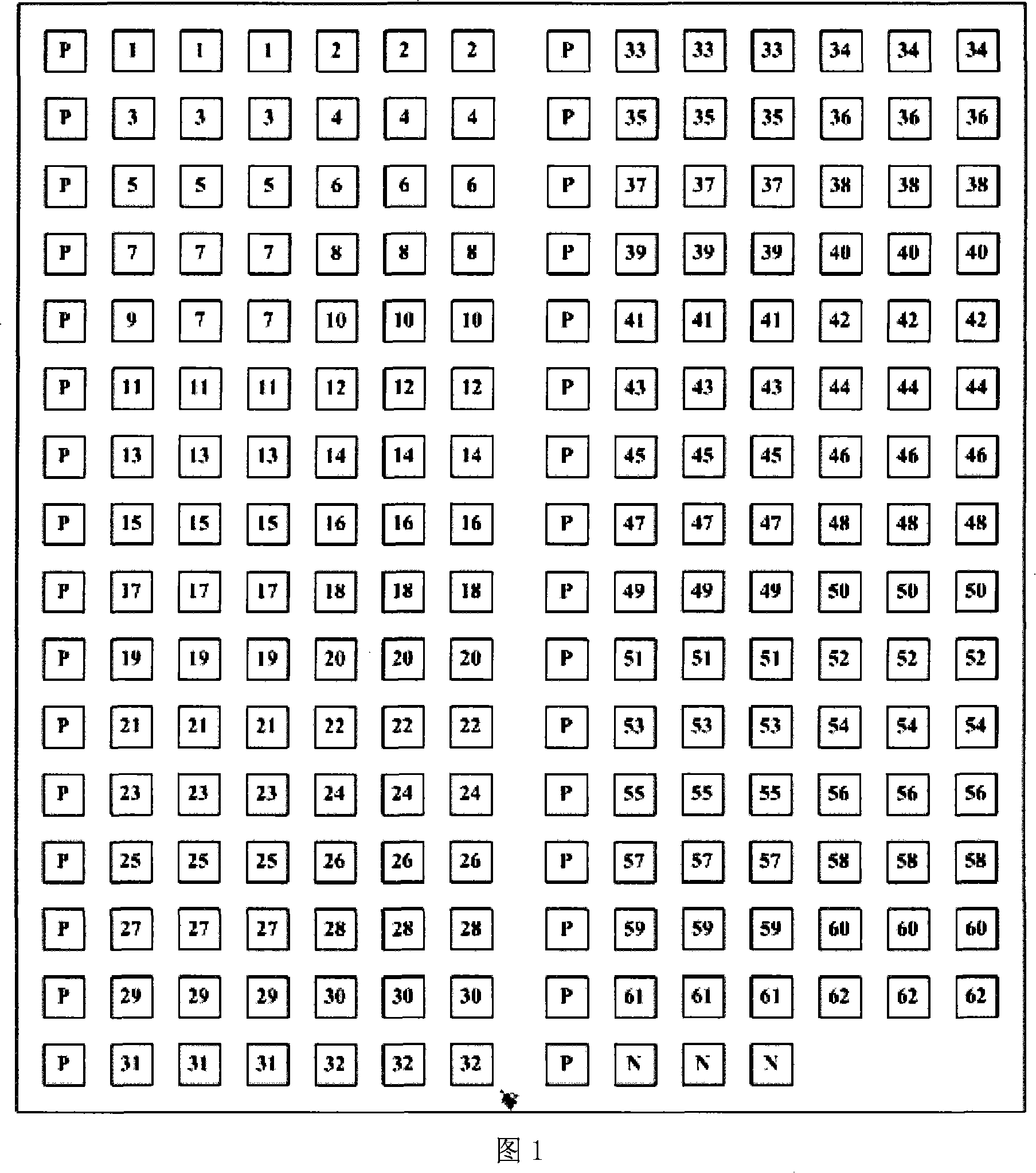Mitochondrial diseases MELAS and MERRF syndrome related mtDNA mutation site detecting gene chip and detecting method
A technology for detecting gene chips and mutation sites, which is applied in biochemical equipment and methods, microbial measurement/inspection, etc., can solve the problems of heavy workload, complexity, and high cost of RFLP, achieve high sensitivity, shorten detection time, and shorten The effect of time to diagnosis
- Summary
- Abstract
- Description
- Claims
- Application Information
AI Technical Summary
Problems solved by technology
Method used
Image
Examples
Embodiment 1
[0058] Example 1 Probe Design and Chip Preparation
[0059] (1) Design of probes on the chip:
[0060] According to the 31 mtDNA point mutations related to MELAS and MERRF syndromes reported in the literature and the revised Cambridge mtDNA reference sequence (revised Cambridge Reference Sequence, rCRS), 62 oligonucleotide probes were designed with Oligo 6.0 software, so that the different probes The Tm value should be as close as possible to (45±5)°C, so that the length of the probe is 14-19 bp, so that the mutation site detected by each pair of probes is located in or near the middle of the probe sequence, so that the probe is compatible with the corresponding single-stranded target gene. The binding site should be as close as possible between the 5' end and the middle region of the single-stranded target gene to ensure hybridization efficiency. The 5' end of the probe has an amino modification group, so as to combine with the aldehyde group modification chip; the comprehen...
Embodiment 2
[0068] Example 2 Exploration and optimization of chip detection conditions
[0069] The hybridization efficiency and thermal stability of the target molecule and the on-chip oligonucleotide probe have a lot to do with the sequence of the probe and the strict control of the reaction conditions. For example, the length of the probe sequence, G+C content, Tm value; the concentration of the probe and the target molecule, the length of the spacer arm, the temperature, time, pH and salt ion concentration of hybridization and washing, etc. The present invention emphatically explores aspects such as the sample concentration of probe, the coating time of probe, hybridization temperature and time, and elution condition (comprising the concentration of elution buffer, elution temperature and elution time) and so on. Optimization is described as follows:
[0070] Chip preparation:
[0071] Hybridization solution: DIG Easy Hyb, purchased from Roche
[0072] a. Optimization of probe conc...
Embodiment 3
[0091] Embodiment 3 repeatability experiment
[0092] Chip sensitivity experiment: select wild-type and mutant probes (SEQ ID NO.51 and 52) of T8344C, a representative and common mutation site of MERRF-related mtDNA, as probes for chip repeatability experiments. The sample concentration is 12.5uM. Cartesian Tech., PROSYS 5510A chip fabrication system dotted on the surface of aldehyde-modified glass slides, 20 spots for each probe on each chip, and placed at 70% relative humidity and room temperature for 48 hours to fix. After taking it out, place it in a boiling water bath for 30 seconds, fully dry it in the air, and store it at 4°C.
[0093] At the same time in five days, take 5ul of PCR products of the same concentration (primers are SEQ ID NO.67 and 68, DNA template is healthy person N1) mixed with 10ul of hybridization solution and spot on the chip, hybridize at 37°C for 30min, 30°C Wash with 2xSSC+0.1%SDS for 10min, 0.2xSSC+0.1%SDS for 5min, and scan the above-mentione...
PUM
| Property | Measurement | Unit |
|---|---|---|
| Sensitivity | aaaaa | aaaaa |
Abstract
Description
Claims
Application Information
 Login to View More
Login to View More - R&D
- Intellectual Property
- Life Sciences
- Materials
- Tech Scout
- Unparalleled Data Quality
- Higher Quality Content
- 60% Fewer Hallucinations
Browse by: Latest US Patents, China's latest patents, Technical Efficacy Thesaurus, Application Domain, Technology Topic, Popular Technical Reports.
© 2025 PatSnap. All rights reserved.Legal|Privacy policy|Modern Slavery Act Transparency Statement|Sitemap|About US| Contact US: help@patsnap.com



